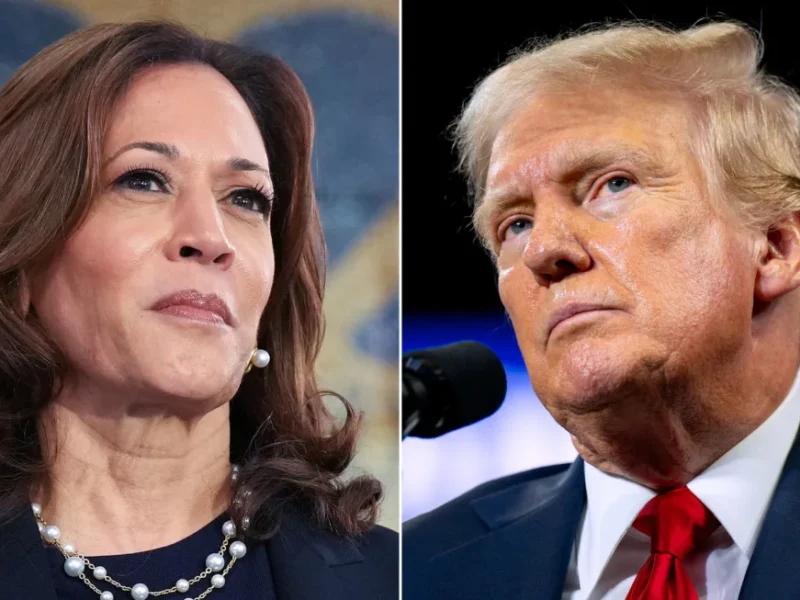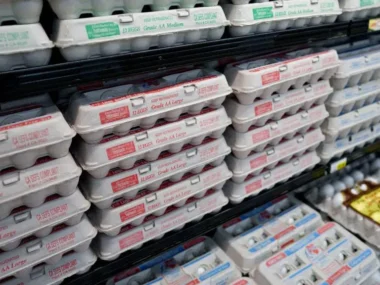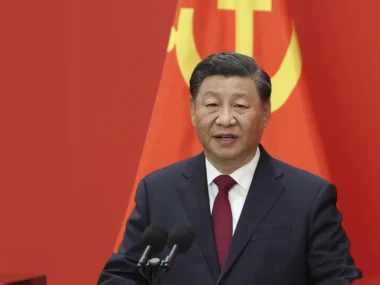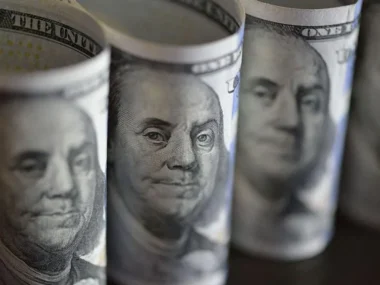Inflation is gradually returning to a more sustainable rate, but many Americans still struggle with the higher cost of living caused by post-pandemic price spikes.
Vice President Kamala Harris and former President Donald Trump have both promised to reduce these costs. However, some economists caution that their plans—Harris’s recent economic policy and Trump’s recent statements—might actually drive prices up, with Trump’s proposals posing a greater risk.
Joe Brusuelas, chief economist at RSM US, noted that both plans could likely increase the deficit and boost demand, particularly through government spending and tightening the labor market. Brusuelas emphasized that Trump’s plan, based on what’s been shared so far, could lead to even higher inflation risks.
Increasing the deficit further.
An analysis of Vice President Kamala Harris’s “Agenda to Lower Costs for American Families” by the Committee for a Responsible Federal Budget (CRFB) suggests her policies could increase the deficit by $1.7 trillion over the next decade, potentially reaching $2 trillion if housing policies become permanent. A significant portion, around $1.2 trillion, would come from expanding the Child Tax Credit.
Marc Goldwein, Senior VP and Policy Director at CRFB, noted that both Harris’s and Trump’s proposals are likely to increase deficits. Higher deficits could lead to more inflationary pressures, resulting in higher costs for essentials or a slower pace of rate cuts by the Federal Reserve.
The Tax Foundation also estimated that Harris’s proposed tax subsidies and federal program expansions could exceed $2 trillion over ten years.
While Trump has not released a detailed economic plan, a CRFB analysis of his proposal to eliminate Social Security benefit taxes projected a cost between $1.6 trillion and $1.8 trillion through 2035. The CRFB plans a more comprehensive analysis of both campaigns’ proposals as more details emerge.
Goldwein emphasized that increased debt would lead to higher interest rates, which is a growing concern since interest payments are now the second-largest government expense, surpassing Medicare and defense spending.
The Harris campaign contends that her plan won’t add to the deficit, citing support for revenue-raising measures in the Biden-Harris fiscal year 2025 budget to ensure billionaires and corporations pay their fair share.
Risks associated with increasing demand.
Harris’ economic strategy focuses on enhancing housing affordability by building 3 million new units, offering down payment aid, and providing a tax credit for first-time buyers. Economists believe increasing housing supply could alleviate market congestion and curb price hikes, but are skeptical about the benefits of additional financial incentives.
Justin Wolfers from the University of Michigan notes that adding funds for housing won’t solve the issue of excessive demand. The expanded child tax credit during the pandemic helped families with child care and living costs, but its long-term impact is debated. Michelle Holder from John Jay College suggests the credit supports families and labor participation despite concerns about its permanence.
Economists also warn that a federal ban on price gouging could lead to unintended consequences, such as increased consumer purchasing.
Concerns about triggering a resurgence of inflation.
Trump has proposed various economic measures, such as increasing tariffs on imports, extending the 2017 tax cuts, further reducing the corporate tax rate, tightening immigration, and expanding domestic oil drilling.
A letter from 16 Nobel laureates warns that these proposals—particularly higher tariffs and extended tax cuts—could “reignite inflation” and harm the US economy domestically and internationally. Harris claims Trump’s proposed 20% import tax could raise typical family expenses by $3,900 annually, though other analyses suggest it might cost $1,700.
While the Nobel economists did not address Trump’s immigration plans, experts caution that mass deportations could disrupt the labor market recovery and inflation trends.











